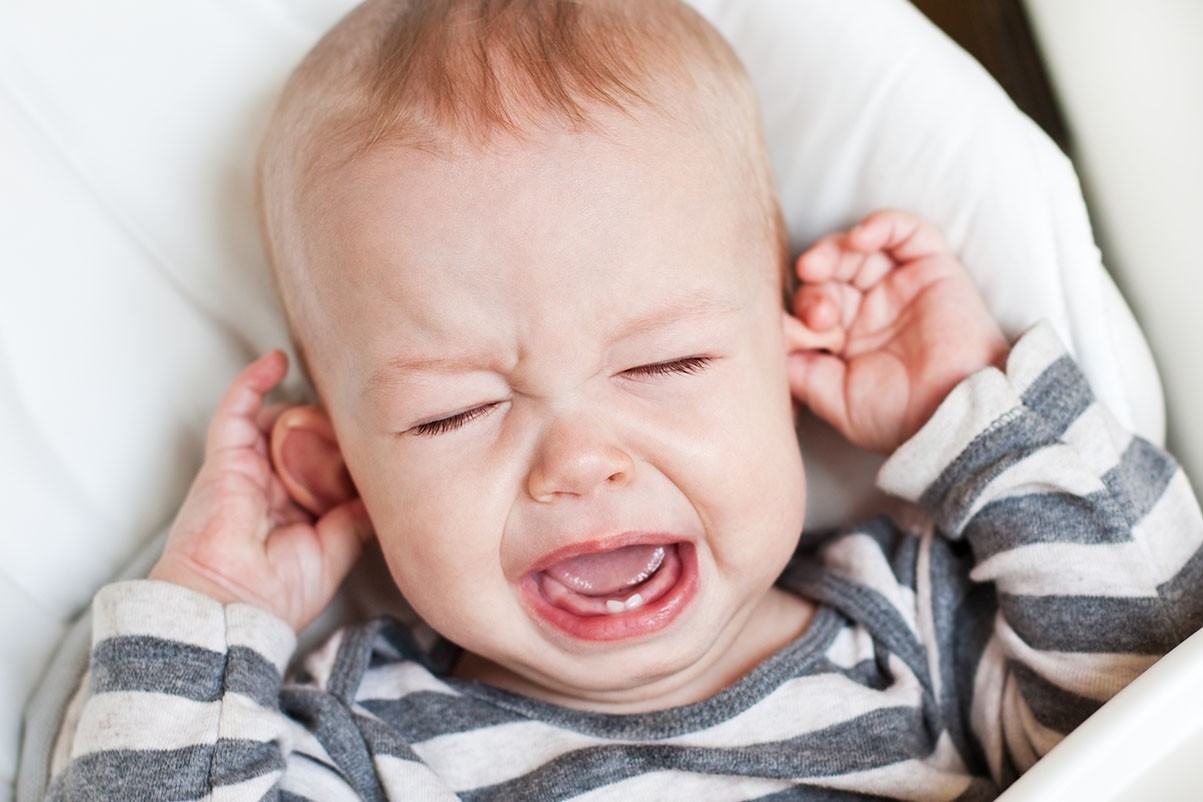
Paediatrics, what needs to be known about childhood otitis
Autumn and winter, the seasons of childhood otitis: after the cold, ear infection is the most frequent infectious disease in children (the majority of children have at least one ear infection in the first three years of life)
Most often they heal without any problems; if infections return frequently they can lead to reduced hearing.
Why do childhood ear infections occur?
The ear consists of three parts: outer, middle and inner.
A small tube, called the Eustachian tube, connects the middle ear with the pharynx and the nose: when a child has a cold, a throat infection or an allergy, the Eustachian tube can become blocked, causing fluid to pool in the middle ear.
If this fluid is infected by viruses or bacteria, swelling of the eardrum membrane and pain in the ear can occur: this type of ear infection is called acute otitis media.
Often when the symptoms disappear, the fluid remains in the ear and can lead to what is called otitis media with effusion.
This condition is more difficult to diagnose than acute otitis media because, except for the stagnation of fluid and a slight reduction in hearing, it causes no other significant symptoms.
This fluid is often reabsorbed within three months; in many cases it disappears spontaneously and the child’s hearing returns to normal.
There are numerous factors that increase the risk of otitis.
Otitis, when does it happen?
Infants and young children are more at risk: the size and shape of their Eustachian tubes favour the stagnation of fluid.
(The younger the child is at his or her first ear infection, the more chance he or she has of having others.
Although the reason is not known, males have more otitis than females.
Otitis may be more frequent in children who have a parent or sibling who have suffered or have repeated otitis.
Colds often lead to otitis: children placed in kindergartens are more likely to catch colds because they are exposed to more bacteria and viruses.
Allergies that cause stuffy noses can also predispose to otitis.
Smoking: children who passively breathe in cigarette smoke have a high risk of developing health problems, including otitis.
Formula feeding: bottle-fed babies have more otitis than breast-fed babies.
If bottle-feeding, it may be helpful to have the baby suck in a semi-erect position, to try not to block the Eustachian tubes.
Parents can help reduce the risk of otitis for example.
How do they manifest themselves?
Pain: this is the most common symptom, expressed by toddlers with irritability and crying.
These symptoms may be more noticeable during breast-feeding: when sucking and swallowing, the pressure in the middle ear changes and the baby feels the pain more and tends to eat less.
He also has more difficulty sleeping, because lying down increases the pain.
Fever: not always present.
Fluid leaking from the ear: a white or yellow fluid may leak from the ear, sometimes tinged with blood; it may smell bad; it is easily distinguishable from normal earwax (which is yellow-orange or red-brown).
The pain often subsides after this leakage of fluid (this does not mean that the infection is gone).
Decreased hearing: During and after an episode of otitis, the child may have hearing problems for many weeks.
This happens because the fluid that stagnates behind the eardrum membrane gets in the way of sound transmission.
It is usually a transient problem and resolves when the fluid goes away.
It can be suspected when the child
- says “how?”, “what?” more often than usual
- does not respond to sounds
- has more trouble making himself understood in noisy environments
- wants the TV volume higher than usual
Ear infections, when to consult the paediatrician? What to do?
If the child has fever and ear pain, consult the paediatrician: symptoms usually disappear within a few days after starting treatment.
Children with otitis do not have to stay at home if they feel well enough and if someone elsewhere can administer the medicine correctly.
If the symptoms persist beyond two days, the paediatrician should be consulted again.
If the child is old enough to chew gum (sugar-free gum, which usually contains xylitol) without swallowing it, he or she may benefit; keeping the child upright as much as possible and letting him or her sleep with an extra pillow may also help to lower the pressure in the middle ear and reduce pain.
What happens if fluid remains in the middle ear?
If fluid remains for more than 3-4 months, it can facilitate repeated infections and may interfere with hearing: in such cases it is useful to perform a hearing test.
- children who have numerous infections may end up with hearing loss
- if the child is less than 3 years old and the hearing loss lasts for more than 6 months, there may be damage to speech development.
Hearing tests: when?
Children can undergo hearing tests at any age.
The paediatrician will have the child tested for hearing when
- there have been repeated otitis (more than 4 in a year)
- there has been hearing loss for more than 6 weeks
- fluid has persisted in the middle ear for more than 3 months.
Read Also:
Emergency Live Even More…Live: Download The New Free App Of Your Newspaper For IOS And Android
Acute And Chronic Sinusitis: Symptoms And Remedies
Tinnitus: What It Is, What Diseases It Can Be Associated With And What Are The Remedies
Barotrauma Of The Ear And Nose: What It Is And How To Diagnose It
How To Remove Something From Your Ear
What To Do In Case Of Earache? Here Are The Essential Check-Ups
Perforated Eardrum: What Are The Symptoms Of A Tympanic Perforation?
Earache After Swimming? Could Be ‘Swimming Pool’ Otitis
Swimmer’s Otitis, How Can It Be Prevented?
Deafness: Diagnosis And Treatment



